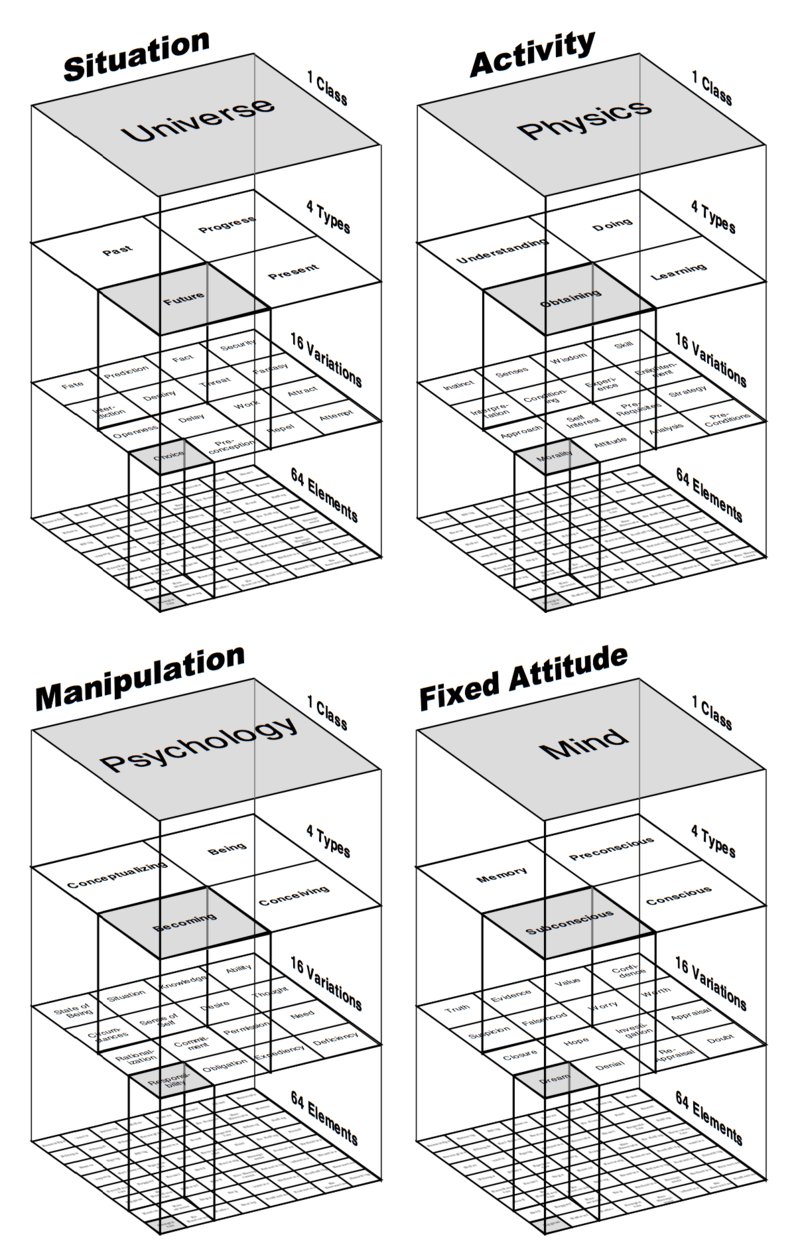
Predicting Who Will Listen To Your Story
Slight adjustments to the structure of your story can guarantee a larger audience.
Writing a story is one thing, finding an Audience to sit still and embrace your story is quite another. Many understand now that a functional narrative functions because it models the mind's problem-solving process; and many understand that men and women solve problems differently. Appreciating that difference makes it possible for writers to predict who will be drawn into their story, and who will simply be observers.
An Interesting Pattern of Narrative
Out of 32,767 unique Storyforms that the Dramatica theory of story can identify, there are some that appear to be duplicates. For example, if you make the following storyform choices:
- Main Character Resolve: Steadfast
- Main Character Growth: Stop
- Main Character Approach: Be-er
- Main Character Mental Sex: Holistic[^mindset]
- Story Driver: Decision
- Story Outcome: Failure
- Story Judgment: Good
- Objective Story Domain: Psychology
- Objective Story Concern: Becoming
- Objective Story Issue: Commitment
- Objective Story Problem: Avoidance
[^mindset]: If using an early version of the Dramatica application, Mindset was known as "Problem-solving Style" or "Mental Sex".
You will find two storyforms that are exactly the same in every single way except for one appreciation--the Story Continuum.[^continuum] Whether you choose to limit this narrative by options or by time, the Main Character thematics, the Objective Story thematics, the Transits in each and every Throughline, and even the Additional Plot Appreciations like the Goal and Consequence--all of those will be exactly the same.
[^continuum]: As with Mindset, early versions of Dramatica referred to the Continuum of a narrative as a "Limit". The concept of the Continuum is a dynamic. While simpler in some regards, the idea of a Story Limit fails to clue an Author in on the impact it imposes within a narrative.
Why is that?
In fact, the longer you play around with Dramatica and the various storyforms that you can create you will begin to notice a pattern: the Story Continuum really doesn't do much of anything. Other story points seem to be connected together. You choose one and instantly Dramatica makes selections for other story points you haven't even addressed yet.
Connecting Story Points Together
Choose a Main Character Approach of Be-er, like our example above, and you will notice that it limits your choices for the Main Character Domain to either Psychology or Mind. This is because a Main Character believes they will find a solution to their problem in the same area they find their problem. If your Main Character has a weight problem, they'll try to address that problem first by eating less or working out more. If your Main Character has an issue with depression, they will first try to will themselves out of that depression by trying to be happy.
Whether or not those solutions work matters little--that's where the Main Character begins to regain some control over their life and why Authors will find it a fitting choice for their Main Character's Approach.
Other story points share similar connections. Choose Steadfast for your Main Character Resolve and suddenly the Main Character and Objective Story cannot share the same Problem and Solution in their Throughlines. Switch it to Changed and now they have to have the same Problem and Solution. Choose an Objective Story Concern of Understanding and Dramatica will force you to have a Story Consequence of Conceptualizing. Choose an Story Goal of Becoming and Dramatica will balance your story out with a Relationship Story Concern of Obtaining.
At first these selections may seem arbitrary--but only until you actually take the time to think them through. In Steadfast stories it is the work that is deemed most important in the narrative and therefore the Problem and Solution between the Main and Objective Stories need not be the same. In a Changed story the opposite is true: the dilemma is factored in here and Problem and Solution are everything. The Actual or Apparent Nature of a story determines its deep underlying thematics.
Same with the Concerns and Consequences. The consequence of failing to understand something is a need to conceptualize an alternative--you have to fill that hole in your understanding with your own concept of how things fit together. If everyone in the story is going to be struggling with changing their natures and becoming something they have never been before, then the counter to that--the Relationship Story between the two principal characters--needs to explore the efforts to achieve something (or Obtain something) in order to properly balance out the narrative.
That still leaves out the Story Continuum. Why doesn't it affect anything?
Hidden Features of Dramatica
The structural model of Dramatica that many are familiar with displays a model of the mind at rest. Here, everything sits comfortably in their correct position, perfectly balanced and at peace.
When an Author begins to make choices within Dramatica, choices like the Main Character Resolve, the Main Character's Approach, or the Story Outcome, the engine within Dramatica begins to twist and turn the above into a justified version of the model. Like a Rubik's cube with rubber bands wrapped around it, the dynamic choices increase tension as they build up the dramatic potential leading up to the beginning of a story. Once set, the initial Story Driver comes along and begins to release that tension, unraveling the narrative until it can return to the model at rest once again.
The dynamic story points serve different functions in the winding up process. The Resolve determines which Throughline--Main or Objective Story--is wound up first. The Approach determines whether the Main Character Throughline is in a positive or negative position (upper or lower) and the Growth determines whether that same Throughline is in a Companion or Dependent relationship with the Objective Story Throughline.
The Story Continuum, it turns out, determines whether or not the children beneath each quad are carried over with the parent as it moves into position. The result of this is that the Author can actually determine exactly what element should be discussed in every single scene and in what order.
That is an incredible and highly informative tool for any writer--
--except that it's complete overkill and detrimental to the creative process.
Chris and Melanie felt the same when they designed the first version of Dramatica and decided to leave this feature out of the initial rollout. The absence of this Dynamic continues to this day as it seems that, after twenty years, writers and producers everywhere continue to struggle with the concept of mastering only four general Transits, or Acts, per Throughline. The Plot Sequence Report, which bridges the gap between the current offerings and the insight afforded by the Limit, only confuses and confounds those who try to master it. Going deeper would result in hearsay from the uninformed.
But there is one, very important function the Story Continuum does have that has nothing to do with the actual structure of the narrative. And it has everything to do with the Audience you are trying to reach.
Determining Who Will Listen to Your Story
While most of Dramatica deals with appreciations tied to the narrative structure of the story, there are four Audience Appreciations that predict how an Audience will react to a given narrative. The Audience Appreciation that consists of the Story Continuum and the Main Character's Mindset is known as the Audience Reach.
Audience Reach identifies which parts of your audience are likely to empathize with your Main Character. More empathy equals greater attendance equals greater word-of-mouth equals greater revenue. By combining the choices made for the Story Continuum and the Main Character's Mindset, a schematic can be graphed to predict the kind of Audience the story will attract.
Mindset is first (Male or Holistic), the Story Continuum is second (Spacetime or Timespace). In addition to having a discernible first Approach to problems, Main Characters employ a method of problem-solving that resorts to either Male thinking or Holistic thinking. Typically, these lines of thinking fall along the gender line: Males think linearly, Females think holistically. Of course, there are variations and permutations in everything and this is not to say that one cannot think using the other's problem-solving style. It simply makes it easier for the Audience to relate and plug into the Main Character when they know his or her method of thinking.
The message is clear: if you want the largest audience, make sure your Main Character approaches problems linearly and that the story witnesses dramatic potentials over temporal sequence. If you want the smallest audience, give your Main Character a Holistic Mindset and emphasize the order over the potentials.
Hard to imagine, right?
That's because it is relating a story about a character who has no concept of the pressure supposedly building up around them. They would be completely disaffected and disinterested. And so would the Audience. A relativistic mind overlooks the sequence of temporal events. Holistic thinkers don't see time the way linear thinkers do--the order of events plays little role in the relationships surrounding them.
The two middle permutations of the Audience Reach account for the blind spots seen within both Male and Female Audience members.
The Male Audience Member's Blind Spot
Guys can't stand people who don't think like they do. They don't get Holistic thinkers, as it seems completely nut-so to approach a problem by balancing the environment. This is why your guy's guy friends despise watching Moulin Rouge!. Christian (Ewan McGregor), about to be revealed as trying to win over Satine (Nicole Kidman) in front of the Duke, starts singing instead of punching and kicking his way to victory.
What?!
That's the response from a Male Mindset and one who has no concept of what can be accomplished simply by a shift in the balance of things. Singing is the perfect solution in this narrative as it resets the tone of the Duke's anger and challenges the lecherous man to see Christian in a new light. In short, holistic thinking is right 75% of the time; linear thinking is appropriate the other 75%.
But don't tell a linear-thinking Male Audience member that. He'll likely punch you in the face.
The Female Audience Member's Blind Spot
For women, the Story Continuum is their curse. Sure, they get Spacetime--balancing out everything like they usually do--they're very comfortable with the idea of dwindling options and choosing which option is the best. But when it comes to a Timespace narrative, they haven't a clue.
When you use time as your basis for understanding everything--when you see the changes and acceleration and deceleration of forces around you first before the actual things themselves--of course time isn't going to seem a factor. A minute can seem like a year, a year like a minute. If you were forced to sit in a cave for nine months while you waited for an alien creature to leave your body, you would want someway to make the days seem like seconds, wouldn't you?!
Over time this became an important, yet often overlooked and under-appreciated way of seeing the world. Turning towards the 21st century, a renewed interest in the feminine and a greater holistic understanding of the world is under way. Just don't try to make them sit through High Noon, 3:10 to Yuma, or Armageddon.[^1] They will likely despise you until you find a way to balance out their annoyance with you.
Dramatica's Ability to Predict the Future
Last week, we discussed Dramatica's ability to predict the future of cable TV and ESPN's eventual internal conflict in the article Using Dramatica to Assess Narrative in the Real World. There it was revealed how Dramatica accurately predicted the eventual state of things today based on the dramatic potential put into place two years ago. The findings were all theoretical...until they weren't.
Similarily, this notion of the Audience Reach being able to predict the potential audience for a narrative was conjecture. It wasn't based on research or analysis. It was developed based on an understanding of human psychology and the difference between the way men and women process inequities and solve problems. And it would continue to be theoretical, if it weren't for 22 years of ensuing analysis that proved it all correct.
If you open up Subtxt[^subtext] and navigate to Storyform Connections, you will be presented with a collection of choices to help you better understand the presence of these story points in completed narratives. Subtxt hundreds upon hundreds of these different unique analyses of films, plays, and novels. By setting the different story points with the drop-down menus provided, you can effectively search through those hundreds of stories for storyforms that fit your choices.
[^subtext]: Subtxt is our premiere app designed to help you quickly and effortlessly outline your next story--and do so based on what you want to say, not on tropes or templates. Learn more about Subtxt.
For the purposes of this article, select MC Mindset under Dynamics and click Add Rule. Then, select Story Continuum under Dynamics and add it as well.
In seconds, you'll be presented with a startling conclusion: out of the 420+ potential narratives, over 300 of them feature Male-thinking Main Characters managing dramatic potentials. That combination accounts for two-thirds of every story analyzed with Subtxt.
That is simply astounding.
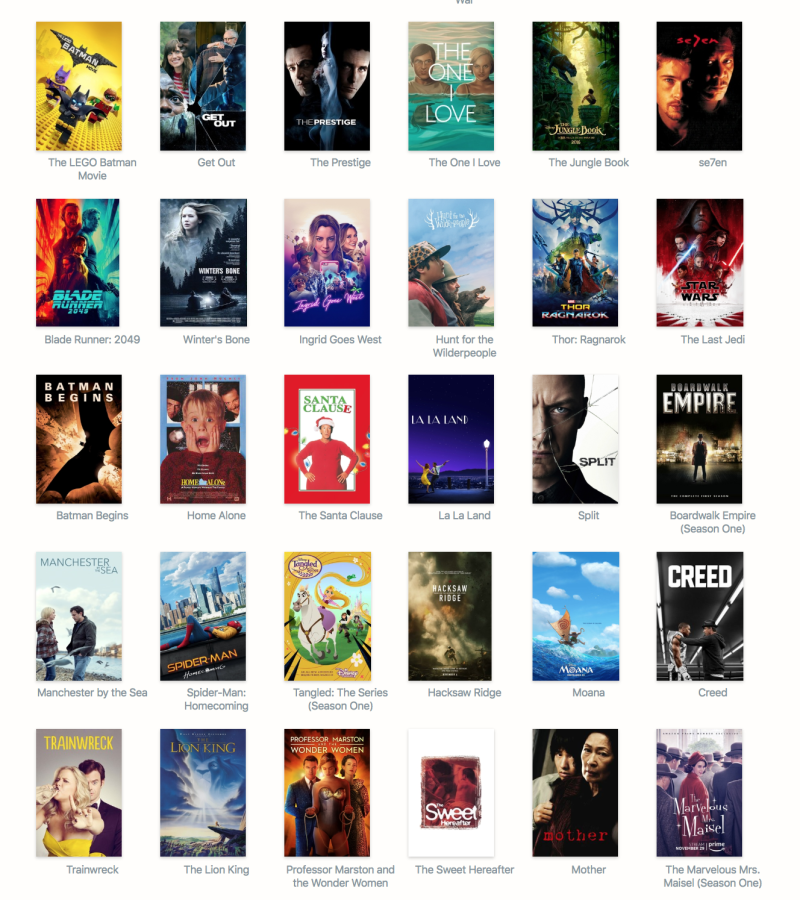
Chris and Melanie were able to predict the kinds of narratives we would find in our culture based on the psychology of the central character and the plot device put into place to bring pressure on that character.
Amazing.
Switch to Holistic/Spacetime. Over 80 different films, novels and plays that satisfy the "chick flick" notion of a Holistic Main Character juggling potentials.
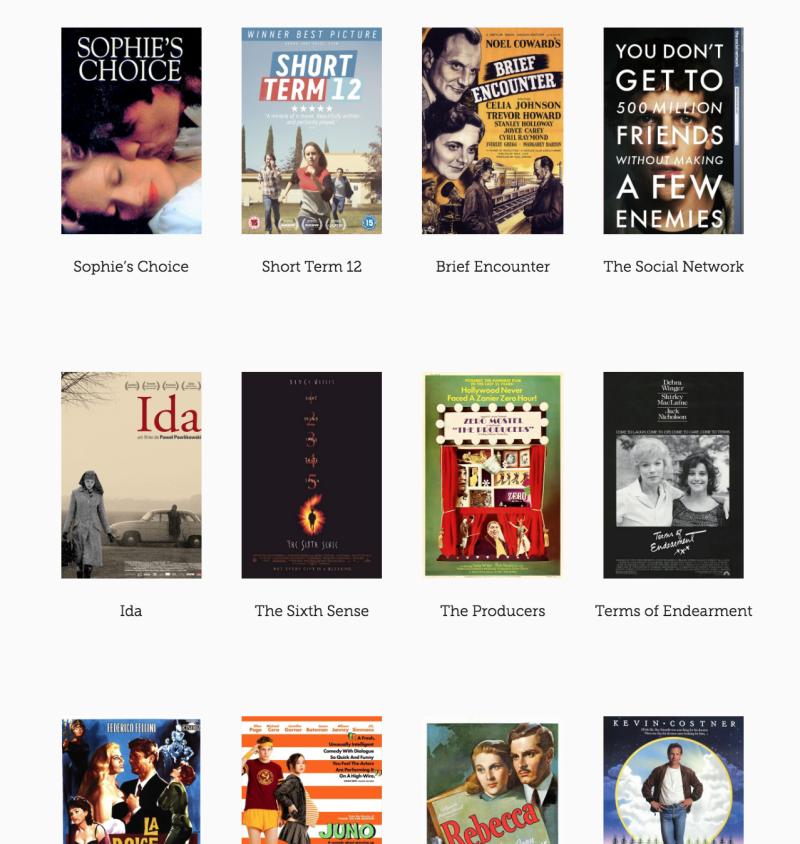
Now let's try the Male's main category--Male/Timespace. Just short of twenty. Sorry guys. Though you may love them, the majority of audiences aren't really into watching the Male Mindset attack a temporal sequence.
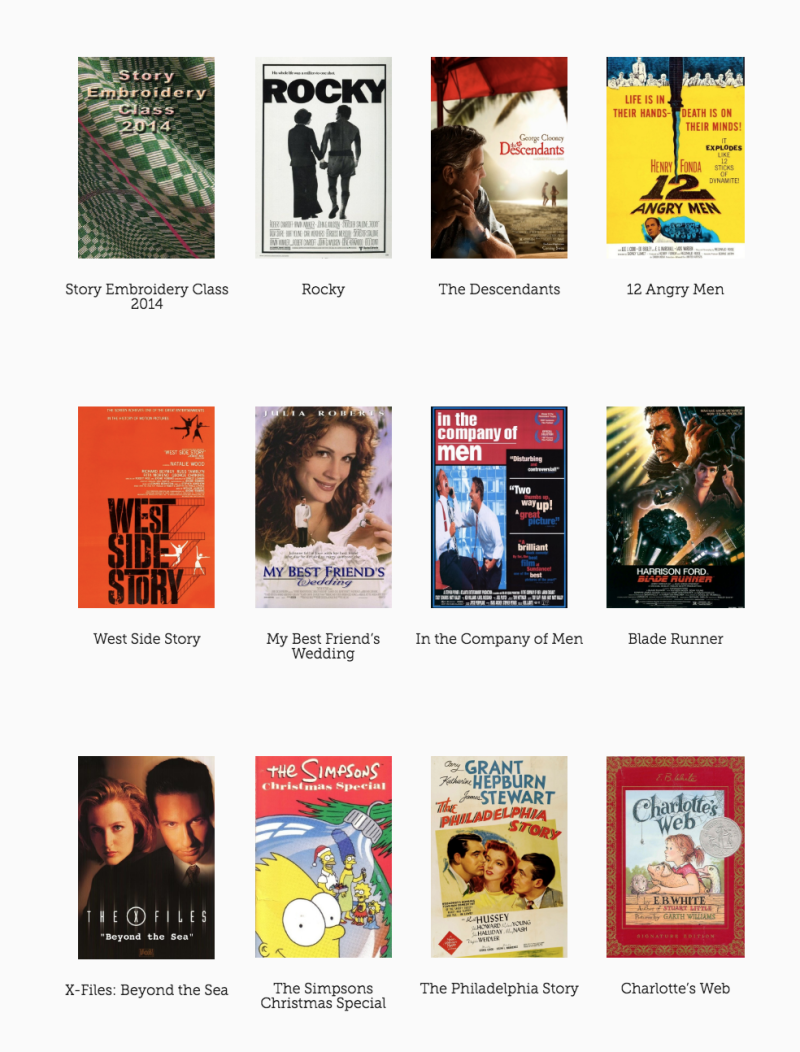
2/3 of all stories feature Male Main Characters managing dramatic potentials. The other 1/3 feature Holistic Main Characters balancing those same potentials and Male Main Characters working a temporal sequence.
But we're still missing one last category: the Holistic/Timespace story. Set those in Subtxt and be prepared to be astounded by a prediction made over two decades ago.
Out of a set of almost 500 stories, only four fit the bill of a Holistic Main Character trapped within a Timespace.
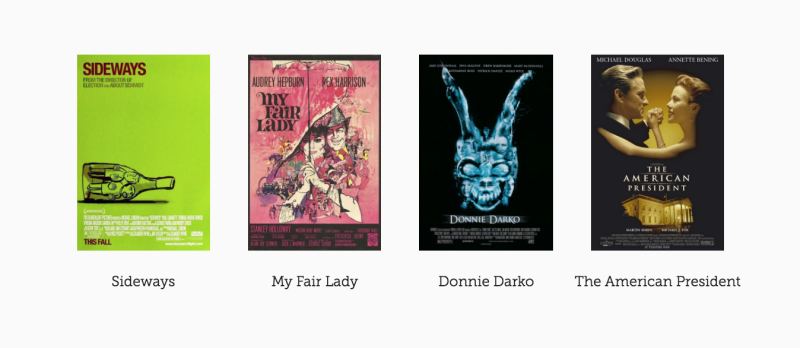
That's right.
Only 1% of all stories turn out to be Holistic/Timespace stories. One of those, My Fair Lady, effectively ends about halfway in. Another, The American President actually juggles both Timespace and Spacetime. And the other, Donnie Darko, no one gets at all.
Sideways is the lone wolf here, having won AFI's Movie of the Year and Best Adapted Screenplay at the 77th Academy Awards. But we're talking Alexander Payne and Paul Giamatti here. And besides, critical acclaim doesn't always translate into higher revenue: Sideways made a little over $100G, ranking 50th in worldwide box office for 2004.
300+. 80+. 19. 4. Everyone. Women. Men. No one.
Though theoretical in presentation, Dramatica's ability to predict the behavior of writers and producers past, present, and future has no equal.
Conclusion
In 1993, Chris Huntley and Melanie Anne Phillips predicted that a majority of complete and effective narratives would feature a Male problem-solver managing dramatic potentials. They went on further to predict a pathetic amount of stories featuring Holistic minds trapped in time.
The ensuing two decades of analysis proved their postulation correct and reaffirmed the power of Dramatica to accurately and confidently predict the soundness of a narrative.
Countless hours of sweat and turmoil go into the creation of a story. Whether it be projected on a screen, presented on stage, or devoured curled up on a couch, the presence of an effective and sound narrative is all that guarantees a fondness and admiration for the work put into it.
Great narrative can be predicted. It shares a structure common to the way our own minds process and resolve problems and thus, can be accurately formulated through a greater understanding of our own psychology. Dramatica offers writers and producers the opportunity to build a better Storymind through its appreciation of the various ways each and every one of us perceives conflict. By accurately predicting human behavior, Dramatica makes it possible for creators to share their unique insights into how best to approach the conflicts we encounter in our own lives.
[^1]: Then again, don't make anyone sit through Armageddon.
Download the FREE e-book Never Trust a Hero
Don't miss out on the latest in narrative theory and storytelling with artificial intelligence. Subscribe to the Narrative First newsletter below and receive a link to download the 20-page e-book, Never Trust a Hero.


